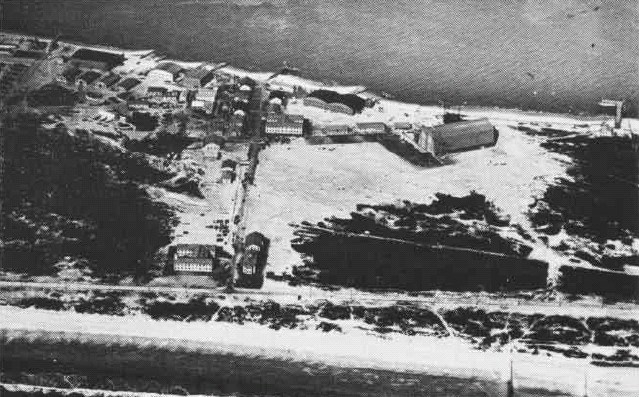Last updated: October 24, 2018
Article
Innovative Defenses at Fort Tilden and Rockaway Naval Air Station during WWI

US Navy
Sometimes the best offense is a good defense. Two sites that made up New York Harbor’s coastal defense system -- Fort Tilden and the Rockaway Naval Air Station, located in present-day Jacob Riis Park -- proved critical in this role during World War I. Part of a larger coastal defense system dating to the 18th century, Fort Tilden and Rockaway Naval Air Station helped protect the homeland during World War I against some of the most advanced weapons systems of the time, “dreadnoughts,” or armored battleships, and a new kind of technology, an “Unterseeboot,” known as a “U-boat” or submarine.
These weapons posed a significant threat to New York Harbor in 1917. The nation’s largest and busiest seaport and center of American finance, New York Harbor was also surrounded by the nation’s largest and busiest city, with a population at the time of 6.5 million. Additionally, New York was home to the Brooklyn Navy Yard, a powerhouse of battleship production for the US Navy. New York was an attractive target to enemy assailants.
On May 7, 1915, German U-boat U-20 sank the British passenger ship RMS Lusitania, killing 1,198 people, including 128 Americans, a product of unrestricted submarine warfare exacted by the Germans in response to a British blockade of the North Sea. Tensions grew over the next two years, and technology advanced. By the time the US entered into the war in 1917, German engineers had created larger U-boats capable of crossing the Atlantic Ocean and attacking the US Eastern seaboard. The threat was real: U-boats would successfully attack Cape Cod in 1918. To protect against this technology in New York, American engineers employed even newer technology: aircraft.
A short 10 days after the US declared war, the Navy was granted a permit by the City of New York to build an air station on the Rockaway peninsula, city-owned land. The primary mission of the aircraft flown from NAS-Rockaway would be to hunt for and destroy German U-boats operating in New York Harbor. Without a runway, the aircraft operating out of NAS-Rockaway needed to be water- and air-based: seaplanes, flying boats, and blimps. Naval aviation was new idea, dating only to 1911. While these aircraft were not outfitted to attack the German U-boats, they forced the submarines to stay submerged, decreasing their effectiveness. These aircraft also allowed surveillance of large areas, effectively alerting antisubmarine ships, such as dreadnaughts, to the location of enemy U-boats.
While neither Fort Tilden nor the Rockaway Naval Air Station fired upon German boats during World War I, they demonstrate the importance of a defensive US military presence in New York City and the New York Harbor through World War I and beyond.